|
Thought is the blossom, language the bud; action the fruit behind it.
–Ralph Waldo Emerson
As an English Language Fellow (ELF), I was sent to Madagascar
to assist in the development of a nationwide English language
curriculum. Like most ELFs, I was sent to a country that is developing,
poor, and highly corrupt. The key reasons behind the ELF program is to
provide avenues for speakers of other languages, in developing
countries, to learn English. Why is this important? The guiding
principle behind the ELF initiative is that having a command of the
English language allows people (in the countries we are assigned to) to
consider and have access to a globalized perspective on diverse topics,
such as politics, society, and economics. Conversely, individuals who
only speak the language(s) used in the community have little power to
question those in control and are more easily influenced.
As described on theELF website, “Program participants serve as
representatives and cultural ambassadors of the United States and,
through a unique cultural exchange, they support the U.S. Department of
State’s public diplomacy mission abroad” (English Language Programs,
n.d.). In essence, ELF participants assist embassies by planting a seed
that complements their efforts to create societies that are more just
and fair.
Human Rights and Corruption in Madagascar
Transparency International ranks Madagascar at 152 out of 179
countries (Trading Economics, n.d.); on a scale from 0 (least corrupt)
to 100 (highest corruption), Madagascar received a score of 74
(WorldData.Info, n.d.), placing it well below the average among the most
corrupt governments.
In Madagascar, many basic human rights are abused, and freedom
of speech is both covertly and actively discouraged (U.S. Department of
State, 2018). Though the constitution permits freedom
of expression, the law restricts individuals’ ability to criticize the
government publicly if such criticism is seen to endanger “public order,
national dignity, and state security” (U.S. Department of State, 2018,
p. 10). Because the constitution allows for the government to censor
news, as well as grant and deny media licenses, there is little venue
for examining Malagasy social issues by Malagasy people (U.S. Department
of State, 2018). Yet, based on my own experience of living in
Madagascar for 2 years, the effects of oppression and poverty are
evident every day and everywhere; from child abuse/neglect to human
trafficking to environmental practices that have degraded the health and
sanitation of the country. Lacking any effective democratic means to
effect change, human rights violations are an accepted fact of life.
It is beyond the scope of this article to delve into the
dynamics that have created this reality. However, understanding the
backdrop is important in why I believe that the lack of dialogue about
social issues among Malagasy people exists. There is just not a venue
for dialogue, but as I found out in my work with youth groups and with
the Access program, there is a profound awareness of the injustices that
affect their lives.
Graffiti in English Teaching
Key to social justice, giving voice to these issues is part of
the solution. In this section of the article, I share a project where my
students used graffiti as a medium of expression while learning
English. In the process of unpacking the images, students were given an
opportunity to openly define, examine, discuss, and debate social
messages. Because their goal was to explain the meaning of the graffiti
to me (I do not speak Malagasy or French), they were tasked with finding
the necessary vocabulary in English to do so. This became a
collaborative effort between students who utilized the more advanced
students’ ability in English as a resource to communicate their thoughts
to me. Malagasy was allowed during discussions. I played a role by
suggesting English words or phrases that helped them clarify their ideas
and thoughts.
During this activity, using local graffiti as an English
language teaching tool became a means of raising awareness of both
social and political issues that are immediately relevant to my
students’ lives. Graffiti provided students with a ready resource for
discussion and reflection. As well, this activity has a very high
efficacy as a language teaching tool because it naturally lends itself
to raising awareness of language ability—which is important to
developing communicative language ability and solidifying language
knowledge. Students grappled with and searched for the “right”
words/phrases that I would be able to understand. Swain states, “in
producing the target language (vocally or subvocally), learners may
notice a gap between what they want to say and what they can say,
leading them to recognize what they do not know, or know only partially”
(1995, pp. 124–125). The active engagement of students during this
activity included heuristics, interlanguage, and translation. As well,
the student-generated content formed the basis for social justice–themed
English language lesson plans.
Sharing the Messages
I now discuss the activity and the results from two groups of
young students. The first activity used the graffiti image showed in
Figure 1.
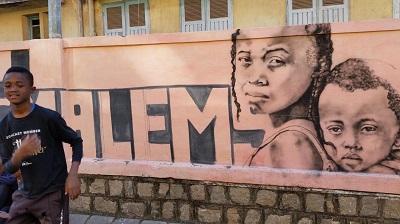
Figure 1. Street children with the word Malem. This was painted on a wall outside an
elementary school in Antananarivo, Madagascar.
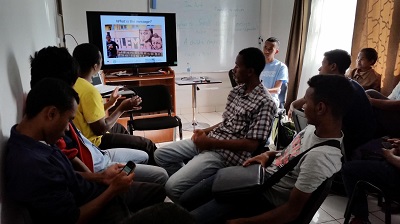
Figure 2. Youth civic center English club participants, Antanarivo, Madagascar.
The group of students in Figure 2 had mid- to high-intermediate
language ability and were between 20 and 30 years old. They regularly
attended an English club made possible by the U.S. Embassy. The activity
was simple; I asked students to name the items in the picture and then
tell me what the picture represented. The children in the graffiti are a
familiar sight in Madagascar, and one student pointed out that very
young children frequently care for their younger siblings while parents
work. What followed was a discussion about the strong family ties in
Madagascar. However, my students told me that children are also used as
beggars or forced to care for their younger siblings and/or younger
extended family members, when their parents are either dead or unable to
take care of them because of addiction problems, illnesses, and other
reasons. Of significance here is that one student noticed that this was
drawn on a wall in front of an elementary school where street children
would probably never be able to attend. Following was a discussion about
childhood rights in Madagascar in comparison to countries in the
developed world.
Using the same image, I also tried this activity with Access
students. Access participants are between 14 and 18 years old and were
chosen to participate in the Access program based on merit in school and
impoverishment at home. Their English ability varied from beginner to
low intermediate. During the identification of objects and subsequent
analysis of the image, students were encouraged to translate for each
other, and a spokesperson was chosen to present their findings to me,
allowing for the entire class to participate. The students described the
word Malem (in Figures 1 and 2) as meaning small, weak, poor, and danger. After some
negotiation, we finally settled on the word vulnerable, an adjective which very likely aptly
describes their own lives. Because of the emerging language ability, we
could not discuss the issue at length, but I felt that the process let
my students know that I, and others, understood the effects of poverty
on children in Madagascar. Sometimes, the act of defining a painful
reality is empowering, and it was my hope that they felt this.
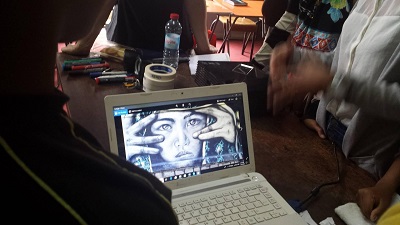
Figure 3. Students viewing “Child’s Eyes.” This was painted
on a wall just outside a very popular park in Antananarivo,
Madagascar.
In the example shown in Figure 3, students surprised me. I had
not noticed that the hands belonged to someone else, and I thought the
picture represented a child playing hide and seek! My students explained
that this child’s eyes were being pried open by an adult and forced to
see things that a child should not and does not want to see. With my
higher level English club students, this led to a discussion about human
trafficking in Madagascar and how some families willingly sell their
children as a way out of poverty.
Personally, these activities helped to raise my own awareness
of some of the social justice issues facing Madagascar and awareness
that has broadened my knowledge of the global community of which we are
all members.
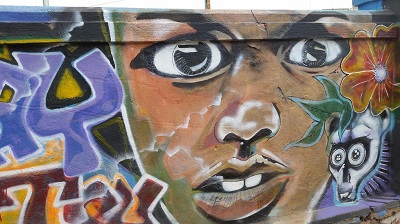
Figure 4. Detail of graffiti.
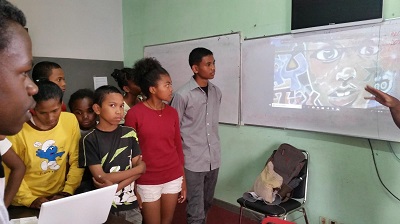
Figure 5. Saturday
afternoon Access participants. Antananarivo, Madagascar.
In the picture shown in in Figure 4, students named the items
in the picture: beautiful child, Madagascar
flower, and lemur (see Figure 5). I
suggested the word endemic and realized that a couple
of students knew this English word.
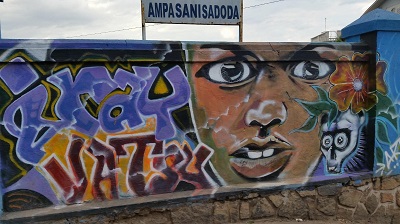
Figure 6: Zoom out of graffiti.
I then zoomed out and showed them the “big picture” and asked
them to explain to me whyiray vatsy was written next
to the art. They told me that it meant sharing food during a journey,
and indeed having travelled with Malagasy people, I have learned that
they share everything—food, accommodations, cars. After some discussion
in Malagasy, a more advanced student explained to me that Malagasy
people do, and need to, share everything with each other. I found out
later that sharing everything —through thick and thin—is a strong
cultural belief and value. Though my students could not express this to
me in English, they found the picture fascinating and it generated much
discussion in Malagasy. I wish I would have had the time to continue to
explore this topic with them.
Final Thoughts
In conclusion, the use of graffiti provided a meaningful venue
for students to begin a dialogue about social and political issues
facing Madagascar in an innocuous setting. As in any country, there is
an inherent pride of place and a need for others to see what is valuable
and beautiful—to see the big picture. Having an outsider define and
point out social and political problems is demoralizing—surely, as an
expat, I do not and cannot fully understand the dynamics of a society to
which I do not belong. In keeping with the diplomatic underpinnings of
the ELF program, my role is to allow students to express/communicate
their ideas using an English voice, not to impose my perceptions or my
voice onto them. Using graffiti and tasking students with describing it
to me, what the images conveyed to them, was an effective means to this
end.
References
English Language Programs. (n.d.). About the English Language
Fellow program. Retrieved from https://elprograms.org/about/
Swain, M. (1995). Three functions of output in second language
learning. In G. Cook & B. Seidlhofer (Eds.), Principles
and practice in applied linguistics (pp. 125–144). Oxford,
England: Oxford University Press.
Trading Economics. (n.d.). Madagascar corruption rank.
Retrieved from
https://tradingeconomics.com/madagascar/corruption-rank
U.S. Department of State. (2018). Madagascar 2018
human rights report. Retrieved from
https://mg.usembassy.gov/wp-content/uploads/sites/163/2018_MDG-HRR_Report.pdf
WorldData.Info. (n.d.). Corruption in Madagascar. Retrieved
from
https://www.worlddata.info/africa/madagascar/corruption.php
Giselle
Robitaille holds an SIT World Learning TESOL master’s degree (2013).
Giselle was an English Language Fellow (2016–2018)
with the Madagascar Ministry of Education. She led a team in developing
and rolling out a new national EAL curriculum, for the public junior
and senior high secondary school levels. While in
Madagascar, she was also actively involved with the
Access program and in developing and assisting English clubs. As a TESOL
educator, her cross-cultural experiences, teaching,
and training skills have been developed in Africa, Canada, the USA, the
Middle East, and East Asia. |

